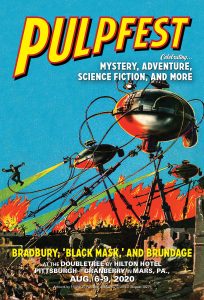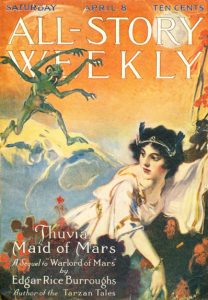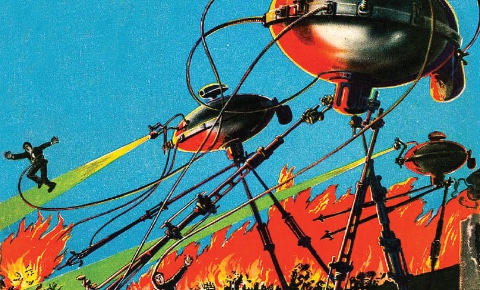 Mars has long fascinated people, due to its color and not being “fixed” as were most other lights in the night sky. The ancient Greeks and the Romans christened the red planet, both naming it after their god of war.
Mars has long fascinated people, due to its color and not being “fixed” as were most other lights in the night sky. The ancient Greeks and the Romans christened the red planet, both naming it after their god of war.
Following the invention of the telescope in 1609, early astronomers began to discern some features of Mars, notably a dark spot on the planet’s surface — probably Syrtis Major — and a white one near its south pole. In 1877, Italian astronomer Giovanni Schiaparelli called the lines he observed on Mars, “canali,” or “channels.” Unfortunately, Schiaparelli’s word was misinterpreted as “canals,” suggesting that intelligent life existed on Earth’s neighbor.
One person who helped popularize the Martian canals was French astronomer and popular science writer, Nicolas Camille Flammarion. A prolific author of more than fifty titles — including some early works of science fiction — Flammarion researched the so-called “canals” during the 1880s and 1890s. In his book, LA PLANÈTE MARS ET SES CONDITIONS D’HABITABILITÉ, Flammarion suggested, “the canals were the product of an intelligent species attempting to survive on a dying world.”
The idea of Martian canals inspired many of the writers of the late nineteenth century to imagine utopias on the red planet. Science fiction and pulp historian Mike Ashley lists Percy Greg’s ACROSS THE ZODIAC (1880), Robert Cromie’s A PLUNGE INTO SPACE (1890), Thomas Blot’s THE MAN FROM MARS (1891), James Cowan’s DAYBREAK (1896), UNVEILING A PARALLEL: A ROMANCE (1893) by “Two Women of the West,” and others in the anthology, LOST MARS (2018). Charles Cole’s VISITORS FROM MARS (1901) has Jesus Christ educated on the red planet, while Hugo Gernsback describes an advanced Martian civilization in “The Scientific Adventures of Baron Münchausen,” published in THE ELECTRICAL EXPERIMENTER from October 1915 through February 1917.
A much grimmer view of the inhabitants of Mars was postulated in the 1897 serialization of the science fiction novel, “The War of the Worlds.” Although H.G. Wells‘s Martians are still an advanced race, the author depicts them as many legged alien creatures who are wedded to giant walking machines in their war to conquer our planet. Wells’s invasion would inspire countless other popular tales including Homer Eon Flint’s “The Planeteer” (ALL-STORY WEEKLY for March 9, 1918), Austin Hall’s “The Man Who Saved the Earth” (ALL-STORY WEEKLY for December 13, 1919), and Edmond Hamilton’s “Across Space” (serialized in WEIRD TALES for September through November 1926). THE WAR OF THE WORLDS remains a popular story in contemporary media.
While H.G. Wells was scaring the bejesus out of the reading public, a more romanticized version of the red planet was also growing in popularity. In Gustavus W. Pope’s A JOURNEY TO MARS (1894), Mars is populated by three races with different skin tones, struggling for the throne of the red planet. Similarly romanticized versions of Mars can be found in British writer Edwin Lester Arnold’s LIEUT. GULLIVAR JONES: HIS VACATION (1905), Avis Hekking’s A KING OF MARS (1908), and other works.
Perhaps the impetus for the more romantic Mars was the work of American astronomer Percival Lowell. Between 1895 and 1908, Lowell wrote three books about Mars that “championed the now-abandoned theory that intelligent inhabitants of a dying Mars constructed a planet-wide system of irrigation, utilizing water from the polar ice caps, which melt annually. He thought the canals were bands of cultivated vegetation dependent on this irrigation.”
 Which brings us to “Under the Moons of Mars,” a six-part serial credited to Norman Bean. The story began in the February 1912 issue of THE ALL-STORY. Retitled A PRINCESS OF MARS for its book publication, Bean’s serial is told by Captain John Carter of Virginia. A wondrous tale of four-armed Tharks and red-skinned Heliumites, of fantastic airships and many-legged thoats, of vast dead seas and long-abandoned cities, and of a lost princess and the man from another world who won her heart, the novel was actually the work of a gifted storyteller named Edgar Rice Burroughs. His tale inspired ten sequels and a host of adventures written by Otis Adelbert Kline, Leigh Brackett, Michael Moorcock, Will Murray, Mike Resnick, and a “magician of words” named Ray Bradbury.
Which brings us to “Under the Moons of Mars,” a six-part serial credited to Norman Bean. The story began in the February 1912 issue of THE ALL-STORY. Retitled A PRINCESS OF MARS for its book publication, Bean’s serial is told by Captain John Carter of Virginia. A wondrous tale of four-armed Tharks and red-skinned Heliumites, of fantastic airships and many-legged thoats, of vast dead seas and long-abandoned cities, and of a lost princess and the man from another world who won her heart, the novel was actually the work of a gifted storyteller named Edgar Rice Burroughs. His tale inspired ten sequels and a host of adventures written by Otis Adelbert Kline, Leigh Brackett, Michael Moorcock, Will Murray, Mike Resnick, and a “magician of words” named Ray Bradbury.
At PulpFest 2020, we’ll be celebrating the 100th anniversary of the birth of author Ray Bradbury. Our keynote address will be presented by Professor Garyn G. Roberts. Bradbury’s pal for more than thirty years, Garyn will discuss the life and works of the Science Fiction Grand Master and “Poet of the Pulps.”
As part of our celebration of the Ray Bradbury centennial, PulpFest 2020 will also pay tribute to the author’s lifelong affair with the planet Mars, best remembered through his work, THE MARTIAN CHRONICLES. As Ray Bradbury wrote in his introduction to Irwin Porges’s EDGAR RICE BURROUGHS: THE MAN WHO CREATED TARZAN:
“For how can one resist walking out of a summer night to stand in the middle of one’s lawn to look up at the red fire of Mars quivering in the sky and whisper, “Take me home.”
Please join PulpFest 2020 on Thursday, August 8, as we welcome Henry G. Franke, III to discuss early visions of the planet Mars at the DoubleTree by Hilton Hotel Pittsburgh – Cranberry in Mars, Pennsylvania. It’s the first part of our series exploring “Visions of Mars,” celebrating the 100th anniversary of the birth of author Ray Douglas Bradbury.
(As many other creators before and after him, Frank R. Paul was very much inspired by the Martians of H.G. Wells. Pictured here is William Lampkin’s modified version of the artist’s cover art for the August 1927 issue of AMAZING STORIES. Wells’s “The War of the Worlds” was serialized in two parts by the Hugo Gernsback science fiction magazine.
P.J. Monahan, on the other hand, was inspired by Edgar Rice Burroughs’ romantic adventures on the planet Mars. Pictured here is Monahan’s cover art for the April 8, 1916 issue of ALL-STORY WEEKLY, depicting a scene from Burroughs’ fourth novel of Barsoom, “Thuvia, Maid of Mars.” The story was serialized in three parts in the Munsey magazine.
Henry G. Franke, III is the Editor of The Burroughs Bibliophiles, the non-profit literary society devoted to the life and works of Edgar Rice Burroughs. The Bibliophiles publish THE BURROUGHS BULLETIN journal and THE GRIDLEY WAVE newsletter. Henry is only the third editor of THE BURROUGHS BULLETIN since its debut in 1947. He was the Contributing Editor and penned the introductions for IDW Publishing’s Library of American Comics archival series reprinting Russ Manning’s Tarzan daily and Sunday newspaper comic strips. The first volume won the 2014 Eisner Award for Best Archival Collection – Strips. He has written articles and other book introductions on Tarzan comic books and strips for TwoMorrows Publishing, Titan Books, and IDW’s Library of American Comics. Henry was the Official Editor of the Edgar Rice Burroughs Amateur Press Association (ERBapa) in 1994-1996, 2004, and 2019-2020. He served in the United States Army from 1977 to 2009 and is now a government civilian employee of the Army.
For a look at our entire programming schedule, please click the Programming button below the PulpFest banner on our home page.)







